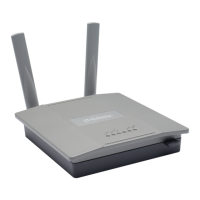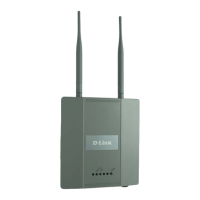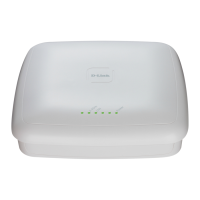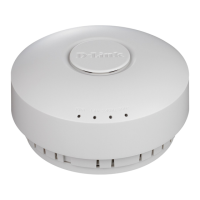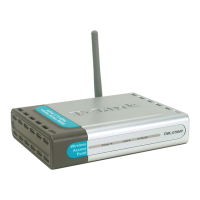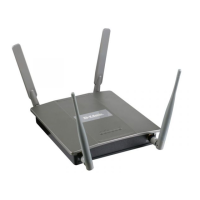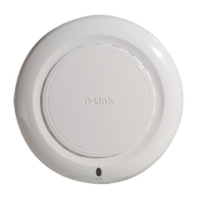Basic Setup
D-Link Unified Wired and Wireless Access System
Oct. 2015 Page 566
D-Link UWS User Manual
Static WEP Rules
If you use Static WEP, the following rules apply:
• All client stations must have the Wireless LAN (WLAN) security set to WEP and all clients must have one of
the WEP keys specified on the AP in order to de-code AP-to-station data transmissions.
• The AP must have all keys used by clients for station-to-AP transmit so that it can de-code the station
transmissions.
• The same key must occupy the same slot on all nodes (AP and clients). For example if the AP defines
abc12 key as WEP key 3, then the client stations must define that same string as WEP key 3.
• Client stations can use different keys to transmit data to the access point. (Or they can all use the same
key, but this is less secure because it means one station can decrypt the data being sent by another.)
• On some wireless client software, you can configure multiple WEP keys and define a client station
“transfer key index”, and then set the stations to encrypt the data they transmit using different keys. This
ensures that neighboring APs cannot decode each other’s transmissions.
• You cannot mix 64-bit, 128-bit, and 152-bit WEP keys between the access point and its client stations.
Using WPA/WPA2 Personal or Enterprise
WPA and WPA2 are Wi-Fi Alliance IEEE 802.11i standards, which include AES-CCMP and TKIP mechanisms. The
WPA/WPA2 Personal employs a pre-shared key to perform an initial check of credentials. The WPA/WPA2
Enterprise security uses a RADIUS server to authenticate users.
WEP Key Length Specify the length of the key by clicking one of the radio buttons:
• 64 bits
• 128 bits
Tx The Transfer Key Index indicates which WEP key the access point uses to encrypt the
data it transmits. To select a transfer key, click the button located between the key
number and the field where you enter the key. In <Link>Figure 363, the transfer key
is 3.
WEP Keys You can specify up to four WEP keys. In each text box, enter a string of characters for
each key. These are the RC4 WEP keys shared with the stations using the access
point.
Use the same number of characters for each key. The number of keys you enter
depends on the Key Type and Key Length. The following list shows the number of
keys to enter in the field:
• 64 bit: ASCII: 5 characters; Hex: 10 characters
• 128 bit: ASCII: 13 characters; Hex: 26 characters
Each client station must be configured to use one of these same WEP keys in the
same slot as specified here on the AP.
Note: The 802.11n clients cannot use the TKIP cipher. Therefore if only TKIP is enabled then the
802.11 clients will not be able to authenticate with the network.
Table 331: Static WEP (Cont.)
Field Description

